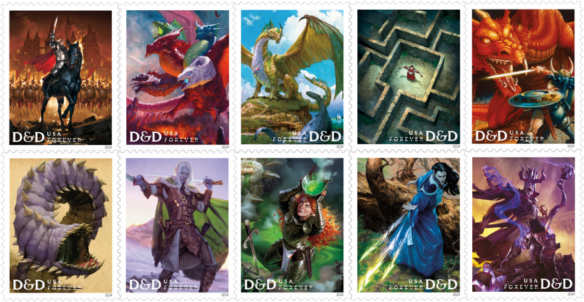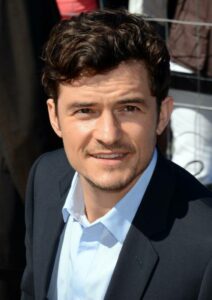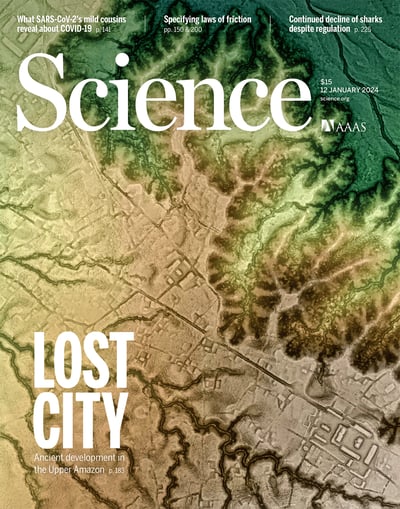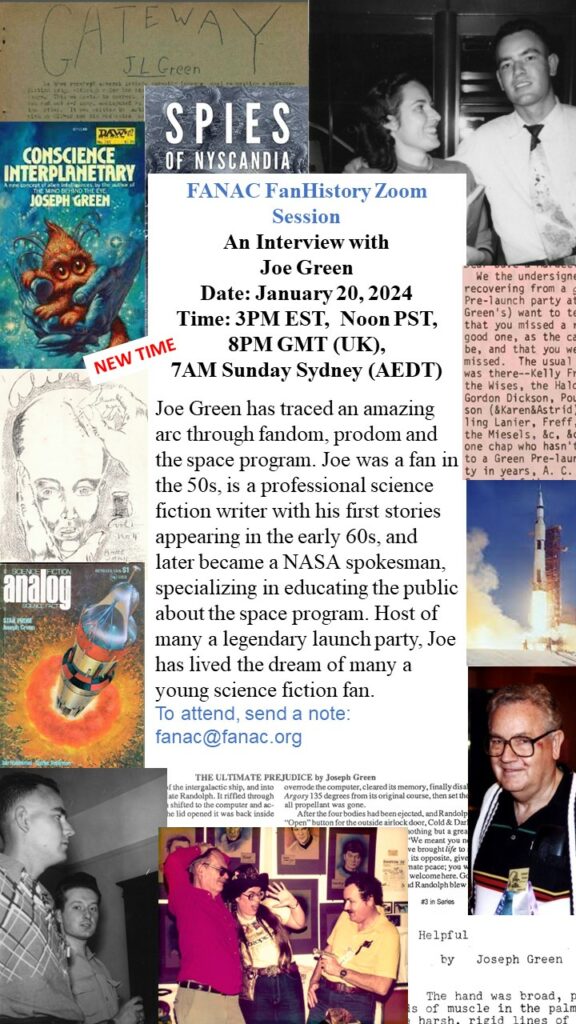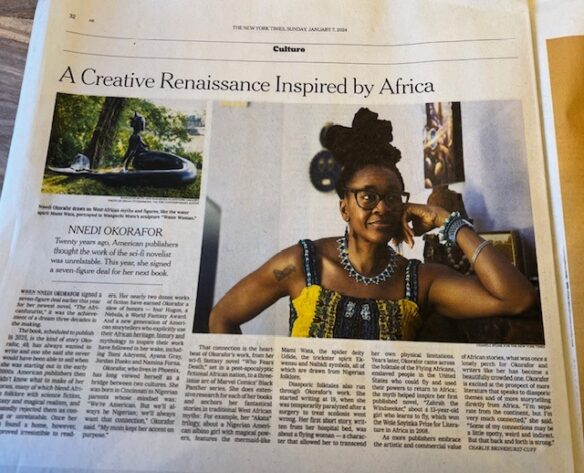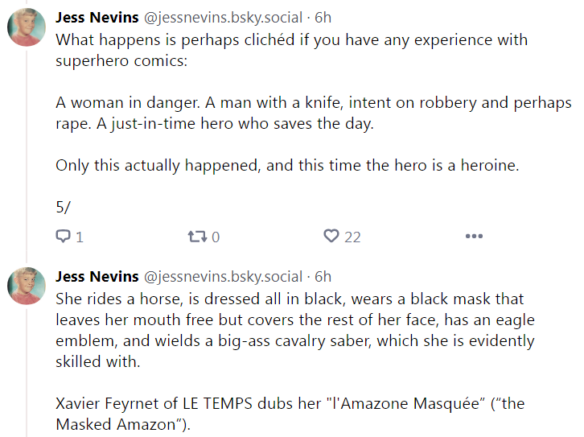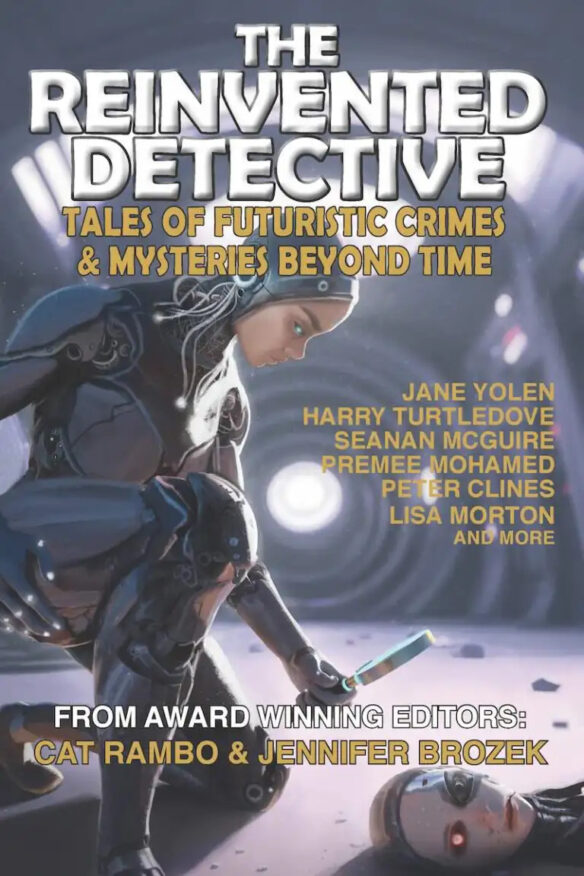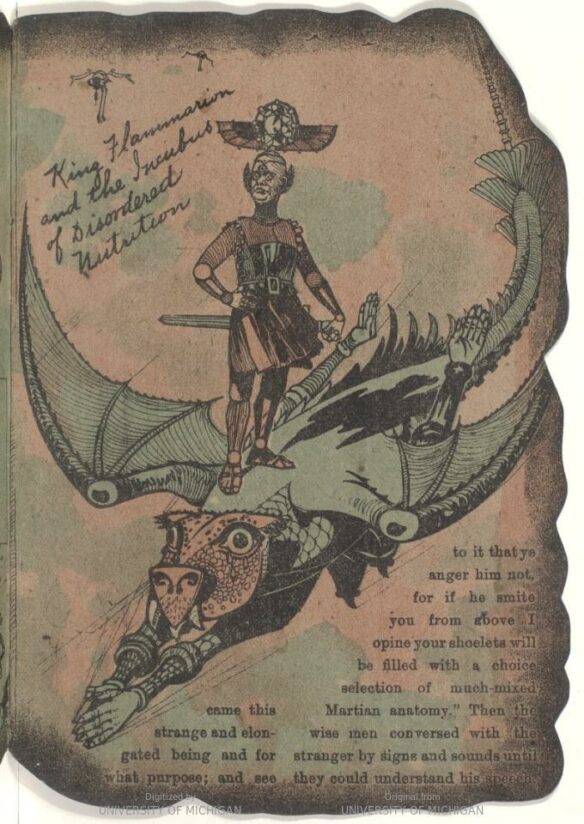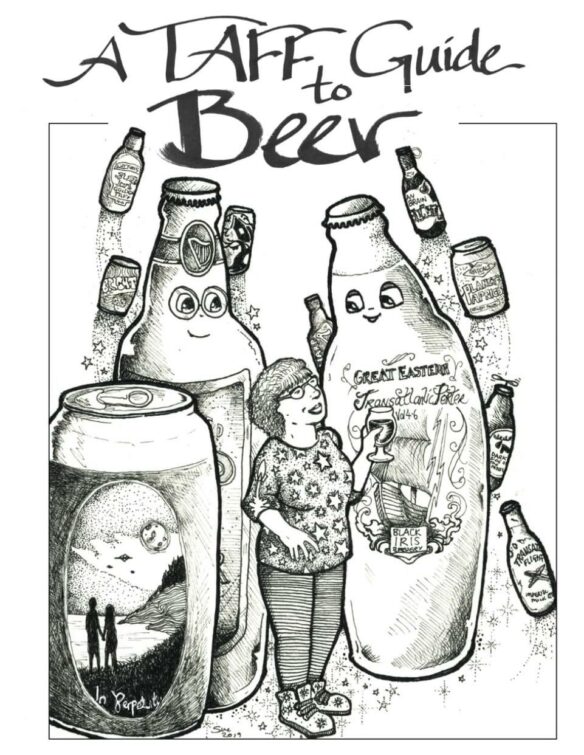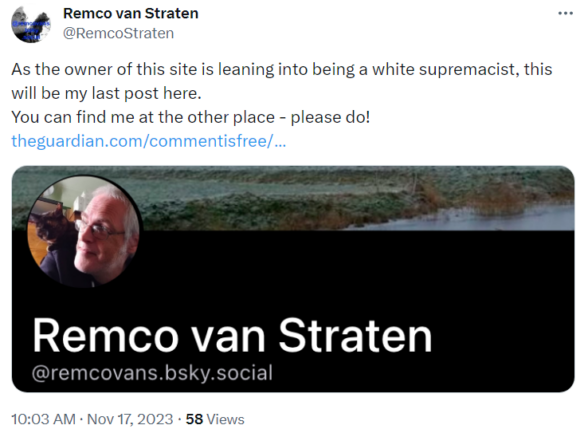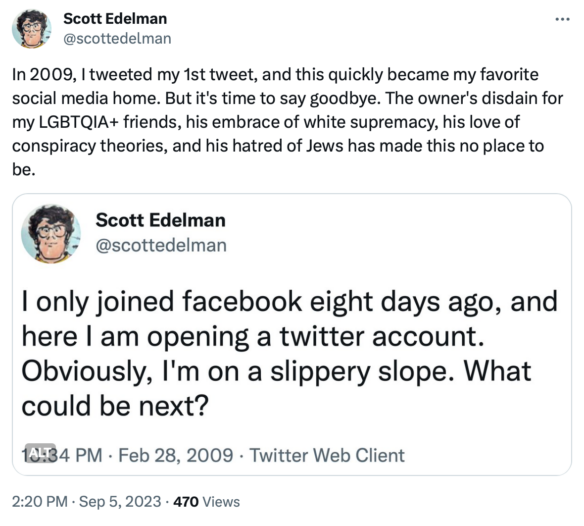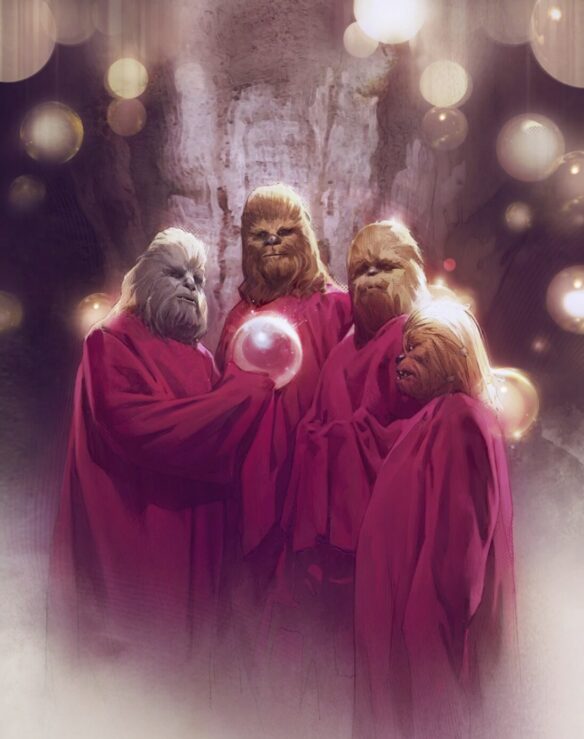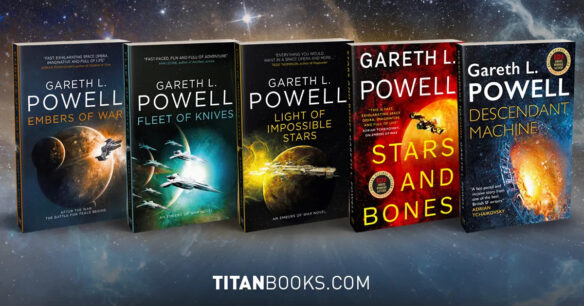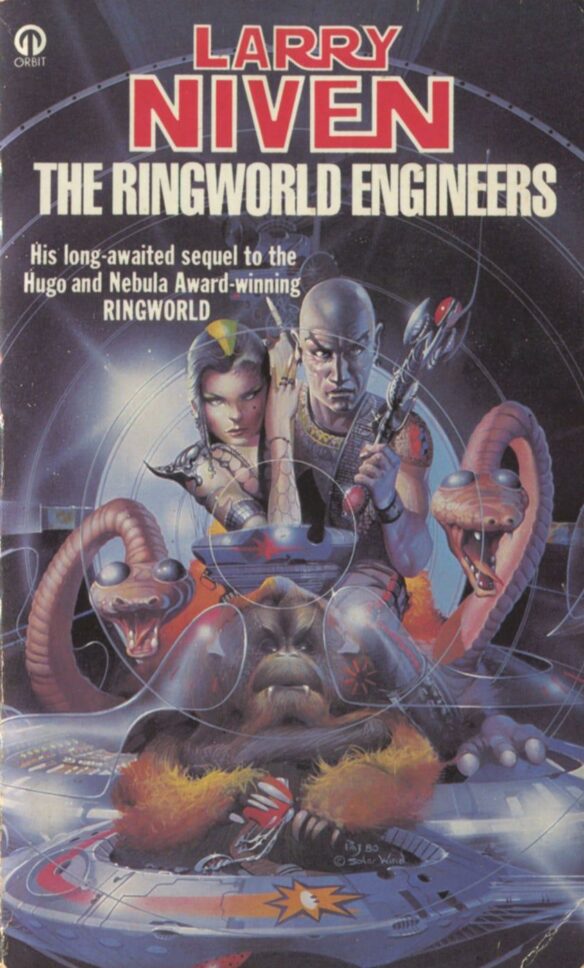(1) GLASGOW 2024 TOWN HALL. Register at the link for Glasgow 2024’s “Town Hall Event: Hugo, Lodestar and Astounding Awards” happening Saturday, April 20 at 7:00 p.m. BST.
This event will be a Town Hall with key members of the Hugo Admin and WSFS team from Glasgow 2024 who will be discussing the Glasgow 2024 awards process and timeline.
The event will be moderated taking questions in advance. If you wish to submit a question for consideration please do so below. There may not be enough time to cover all questions.
The registration for event is free and will be also be live streamed on our youtube channel – https://www.youtube.com/@Glasgow2024
(2) IT’S OVER AT EVERMORE. [Item by Dave Doering.] KSL.com reports the final closing of our Disney-esque Evermore Park fantasy land in Utah. Sadly, Covid has claimed yet another victim. “Utah immersive fantasy park Evermore shutting down; property owner promises a ‘new attraction’”. I might hope that Brandon Sanderson would step up with another $35M campaign to create a Brand-a-land there…
Evermore Park in Pleasant Grove will not be forevermore.
Officials confirmed Tuesday the fantasy theme park is shutting down, citing challenges with its operating model and the effects of the COVID-19 pandemic as reasons for its closure.
Evermore Park was a year-round fantasy adventure experience where guests accomplished adventures or quests in a medieval and Victorian-inspired village.
Brandon Fugal, the property owner of the 12.75 acres Evermore Park is located on, said the tenants who run the “experiential-themed attraction” have closed the park’s doors permanently. Fugal owns Evermore Park Investments LLC, which owns the real estate and 27 “old-world” structures that comprise the park.
“That said, the real estate where Evermore Park was located is being repositioned to unveil a new attraction and project that is going to be announced,” Fugal said….
…”They have defaulted and have been evicted from the property,” Fugal said of the park’s operators. “In the wake of these challenges, I am confidentially working with a new enterprise that will be unveiling exciting new plans.”…

(3) JON SNOW BACK ON ICE. ScreenRant has learned from actor Kit Harington that the “Game Of Thrones Jon Snow Spinoff Series No Longer In Development At HBO”.
The Jon Snow spinoff of Game of Thrones is no longer in active development at HBO. Though the main series ended in 2019, the fantasy franchise is continuing with multiple prequel series based on the works of George R.R. Martin, including House of the Dragon and the upcoming A Knight of the Seven Kingdoms: The Hedge Knight. It was first reported in 2022 that a Jon Snow spinoff series, which would act as a sequel to Game of Thrones following Kit Harington’s character, was in development.
Now, during an exclusive interview with Screen Rant promoting Blood for Dust, Harington confirmed that the Jon Snow spinoff series is no longer in development. The actor says the project was previously in the developmental stage, but “currently, it’s not” and “it’s off the table” because they “couldn’t find the right story to tell.” Though it’s no longer in active development, Harington hopes they can revisit the project sometime in the future.
(4) GARETH POWELL Q&A. CanvasRebel magazine invites readers to “Meet Gareth Powell”.
Gareth, looking forward to hearing all of your stories today. If you could go back in time do you wish you had started your creative career sooner or later?
As far back as I can remember, I have wanted to be a storyteller. I studied creative writing at University and was fortunate to count Diana Wynne Jones and Helen Dunmore as early mentors. I always wrote, but real life and its accompanying financial pressures stopped me from pursuing writing as a career until the turn of the millennium, when I realised I was turning thirty and entering a whole new century. If I was ever going to give it a go, now was the time.
Once I’d made that decision, it took ten years until my first novel saw publication. Since then, I’ve written another eleven published novels, three short story collections, three novellas, and a non-fiction guide to life as an author.
Writing takes a lot of hard work and it helps if you’ve amassed a lot of experience that you can draw on to make your work authentic. I guess sometimes you have to put a few miles on the clock before you can write about the journey….
(5) SAMANTHA MILLS ONLINE EVENT. Space Cowboy Books will host an “Online Reading and Interview with Samantha Mills” on Tuesday, April 30 at 6:00 p.m. Pacific. Free registration at Eventbrite. Get your copy of the book here.
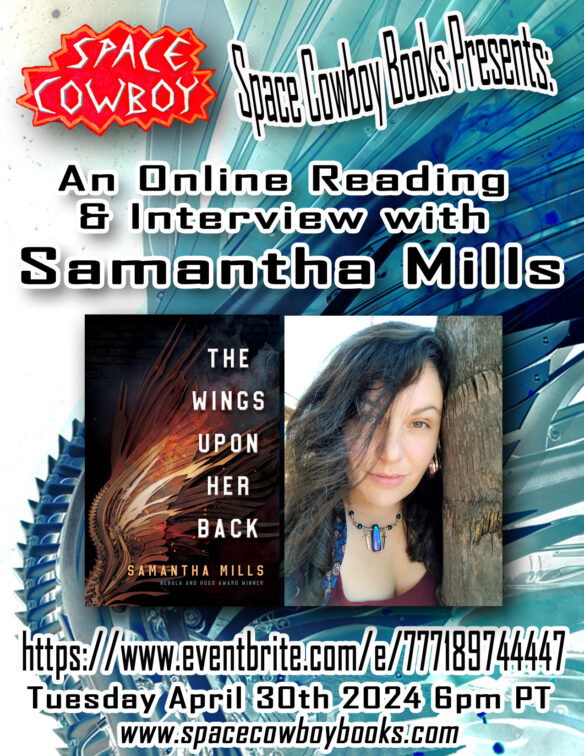
A loyal warrior in a crisis of faith must fight to regain her place and begin her life again while questioning the events of her past. This gripping science-fantasy novel from a Nebula and Locus Award-winning debut author is a complex, action-packed exploration of the costs of zealous faith, brutal war, and unquestioning loyalty.
Five gods lie mysteriously sleeping above the city of Radezhda. Five gods who once bestowed great technologies and wisdom, each inspiring the devotion of their own sect. When the gods turned away from humanity, their followers built towers to the heavens to find out why. But when no answer was given, the collective grief of the sects turned to desperation, and eventually to war.
Zenya was a teenager when she ran away from home to join the mechanically-modified warrior sect. She was determined to earn mechanized wings and protect the people and city she loved. Under the strict tutelage of a mercurial, charismatic leader, Zenya became Winged Zemolai.
But after twenty-six years of service, Zemolai is disillusioned with her role as an enforcer in an increasingly fascist state. After one tragic act of mercy, she is cast out, and loses everything she worked for. As Zemolai fights for her life, she begins to understand the true nature of her sect, her leader, and the gods themselves.
(6) PETER HIGGS (1929-2024). Theoretical physicist Peter Higgs, who won a Nobel Prize for his work on the mass of subatomic particles, died April 8 at the age of 94. The Wikipedia explains the background of his prediction of the existence of a new particle which came to be called the Higgs boson, It was finally detected in 2012 at CERN’s Large Hadron Collider. The discovery of the Higgs boson prompted Stephen Hawking to note that he thought that Higgs should receive the Nobel Prize in Physics which he did, shared with François Englert in 2013.
And that’s the background to this gag, which Higgs played along with:
(7) TODAY’S BIRTHDAY.
[Written by Paul Weimer.]
Born April 10, 1957 — John M Ford. (Died 2006.) Paul Weimer wrote our Birthday this time. (Cat Eldridge says, “I bribed him with chocolate.”)
John M Ford has, sadly after his passing, become one of my heart writers. Years ago I came across one of my favorite novels, period, The Dragon Waiting. Possibly one of the best alternate history novels ever written, and simultaneously introduced me to a new point of view on Richard III.
It was not until I started going to 4th Street Fantasy con, of which he is practically a patron saint, that I really have grasped just how wide and broad his work really is. Space Opera? Early Cyberpunk? Urban Fantasy? The writer who Ford reminds me of, today, is Walter Jon Williams: a ferocious and restless talent. Ford’s last and incomplete novel, Aspects, a steampunk-esque fantasy novel, only cements that sentiment.
Ford’s work is not for everyone. It is work that not only rewards close attention, it demands it in order to enjoy it. In that way think if we wanted to reconstruct Ford, in addition to Walter Jon Williams, we’d add a lot of Gene Wolfe as well.
Finally, Ford’s writing and style has more than a touch of the mythic and definitely the poetic. There is joy in reading his work line by line, be its setting or sharp dialogue. So to complete this reconstructIon, add a helping of Roger Zelazny as well.
Given my love of these three, now you see why Ford is one of my favorites. And taken from us all too soon.
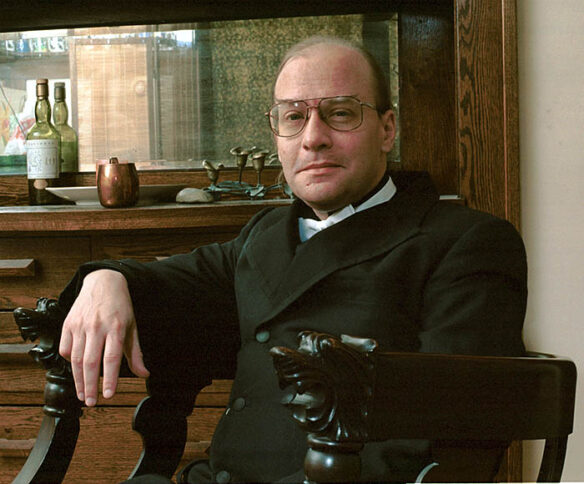
(8) COMICS SECTION.
- Saturday Morning Breakfast Cereal has a Berlitzkrieg – a bilingual pun. You’ll all get it – and you won’t be allowed to give it back!
- Bliss brings us the latest in alien pop culture.
(9) NEW BRUST. [Item by Daniel Dern.] Lyorn — Steven Brust’s 17th Vlad Taltos novel — is out! (I’ve just placed a library reserve) Published by Macmillan.
As I recall, Brust’s series can be read in any order, the most common choices between chron-published, or book-chron. So if you haven’t yet had the pleasure of reading any or all of the prior 16, you can start here and then backfill based on availability. Or alphabetical order, or by word count, up to you.
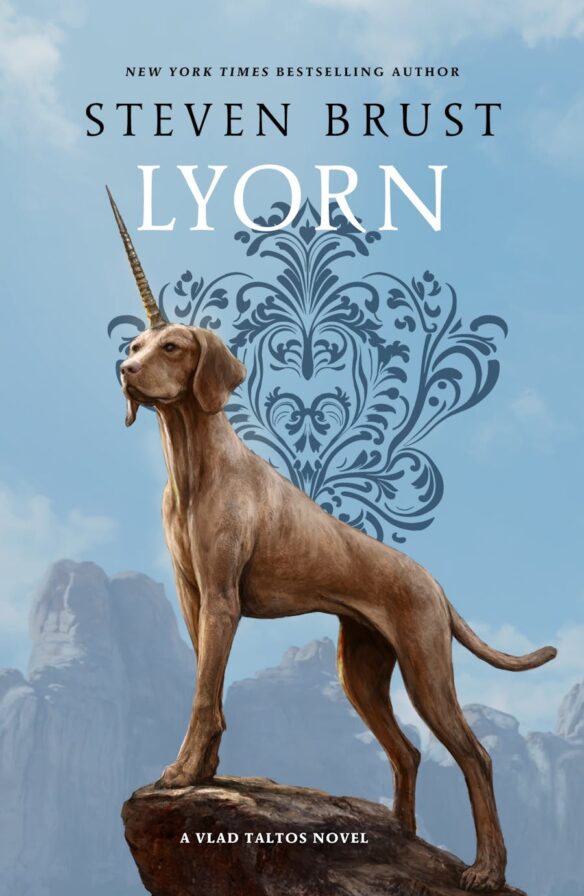
(10) CASH OFFENDS NO ONE. Good news for Chinese fans of these games: “Blizzard and NetEase Settle Their Beef, Returning Warcraft to China” at the New York Times. The companies involved found the right price.
The Chinese company NetEase said on Wednesday that it had struck a deal to distribute titles from Microsoft’s Blizzard Entertainment, restoring access to popular video games like World of Warcraft for Chinese gamers.
More than a year ago, NetEase and Blizzard called an end to their long-running partnership when renewal talks turned testy, with both sides accusing each other of bad-faith negotiations. An uproar ensued among Chinese gamers, upset about losing access to a slew of popular titles from Blizzard’s parent company, the U.S. game developer Activision Blizzard.
NetEase said on Wednesday that it had reached the new deal with Microsoft, which acquired Activision Blizzard in a $69 billion deal in October. The two companies said they had also agreed to distribute NetEase titles on Microsoft’s Xbox game device….
(11) FLAME ON. Variety admires the “’Borderlands’ Trailer at CinemaCon: Cate Blanchett With a Flamethrower”.
Even Eli Roth can’t believe that two-time Oscar winner Cate Blanchett was willing to learn to twirl guns and shoot baddies in “Borderlands,” the director’s gonzo adaptation of the popular video game.
Roth noted that since people loved seeing Blanchett wield a baton in “Tár,” where she portrayed a fictional world-famous conductor embroiled in controversy, the filmmaker said he might as well “put a flamethrower in her hand.”
In “Borderlands,” Blanchett sports a fiery red bob and is surrounded by the starry ensemble of Kevin Hart, Jamie Lee Curtis, Jack Black and “Barbie” breakout Ariana Greenblatt. The story follows Blanchett as Lilith, an infamous outlaw with a mysterious past. She reluctantly returns to her home planet of Pandora and forms an unexpected alliance to find the missing daughter of Atlas….
This trailer is from a month ago – quite entertaining all the same.
(12) JOKER SEQUEL GOES GAGA. “Joker: Folie à Deux: trailer for Joaquin Phoenix and Lady Gaga musical sequel released” – and the Guardian listens in.
The first trailer for Joker: Folie à Deux, the musical sequel to Joker starring Oscar winners Joaquin Phoenix and Lady Gaga, has been revealed.
The sequel sees Phoenix return as Arthur Fleck, the titular aspiring standup comedian turned villain, and Lady Gaga as Dr Harleen Quinzel, a psychiatrist assigned to treat Fleck at Arkham Asylum, who falls in love with him and becomes his accomplice Harley Quinn.
The title is a reference to a psychiatric syndrome in which a delusional state is shared by two people.
Unlike Joker, Joker: Folie à Deux will be a musical and is expected to include 15 numbers, Variety reported, with most of them being covers of pre-existing songs, including That’s Entertainment from the 1953 musical The Band Wagon, which was also famously sung by Judy Garland. The trailer features the 1965 song What the World Needs Now Is Love….
(13) SNL DOES SFF. From last weekend’s Saturday Night Live with guest host Kirsetn Wiig. One skit is fantasy – isn’t it? The other is definitely horror!
(14) HOW WAS THE ECLIPSE FOR YOU? [Item by SF Concatenation’s Jonathan Cowie.] Lots of media coverage this side of the Black Atlantic on the eclipse as seen across a vast swathe of the Cursed Earth. For example, the BBC’s photo gallery: “Solar eclipse: Stunning images as darkness descends on North America”. And the science research “Total solar eclipse: The 4-minute window into the Sun’s secrets”, also from the BBC.
Meanwhile PBS Space-Time has looked at how eclipses helped the ancients work out the basic astronomy of the Solar System. They knew, from the mid-day shadow of an upright pole of known length measured at both ends of a north-south line many miles long, the curvature of the Earth, hence its size. They could then see from the Earth eclipsing the Moon the Earth’s shadow on the Moon and so work out the comparative size of the Earth to the Moon. Knowing the Earth’s size it was then possible to calculate the Moon’s size. Knowing the Moon’s size, and the size it appears to us, enabled them to work out the distance between the Earth and the Moon. Then using Venus eclipsing, or rather transecting, the Sun from different places on the Earth, they could then work out the distance to Venus….
(Meanwhile, those who have attended my bio-astronomy talks over the years will recall that some corals not only have daily growth rings (due to daily temperature changes) but also monthly bunches of rings due to the reproductive cycle triggered by tides which are caused by the Moon, as well as yearly super bunches outside of the tropics due to cooler winters. By looking at fossil corals tens of millions of years ago it is possible to work out how many, months and days there were in the year back then. And so it is possible to see that the Moon was closer to the Earth and orbited faster back then. Plugging in the distance between the Earth and the Moon it is possible to see how fast the Moon is retreating from the Earth and also how the Earth’s day has been getting longer… But I digress (if you want to know more you’ll have to ask me to give the talk at your con). Back at the plot you can see the 16-minute PBS Space-Time video here…
(15) THE STARSHIP TROOPERS VOTING CONTROVESY SOLVED??? [Item by SF Concatenation’s Jonathan Cowie.] Grammaticus Books takes a bit of a dive into Heinlein’s Starship Troopers to see how much of a right-wing military state it was.
A detailed look at all of the evidence and passages contained within Robert A. Heinlein’s seminal military-science-fiction novel, Starship Troopers, to determine once and for all who could vote in his Terran Federation. And who could not vote. Resolving the broad and widespread false beliefs so prevalent among the fandom and across the internet.
[Thanks to Mike Kennedy, Andrew Porter, John King Tarpinian, Daniel Dern, Dave Doering, Chris Barkley, Cat Eldridge, SF Concatenation’s Jonathan Cowie, and Steven French for some of these stories. Title credit belongs to File 770 contributing editor of the day Daniel Dern.]

